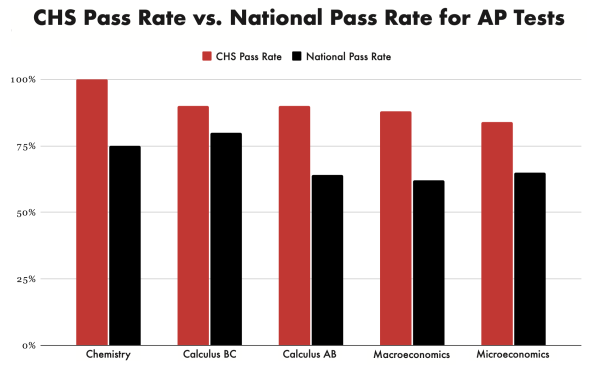Homework is controversial and inconvenient but a fact of life for most high school students. That’s not to say it doesn’t serve a purpose; homework is often essential to ensure students’ class time is as well used as possible. But that knowledge hasn’t changed the prevailing disdain for these at-home assignments.
When I look at the people around me, the people I’ve spent the better part of a decade with, I see some of the brightest minds of our generation—the leaders of tomorrow. But I also see kids still frantic about avoiding even the slightest blemish on their transcripts, sacrificing sleep and socialization to ensure their profile is picture-perfect.
But when the only reason we do our homework is out of fear of a bad grade, a growing sense of apathy and demotivation is the natural next step. We aren’t striving for anything just to avoid something.
This is the underlying problem of homework. Our conceptions of this classroom staple are so cemented that we don’t notice the cracks in the foundation. Homework, as it currently stands, is just part of school, or so we say. However, students are spending their pivotal years lost in an overworked haze, and we at least owe them assignments with real meaning behind them.
The good news? We’re already seeing starts in a new approach to homework. Dr. Daniel Glossenger, who teaches AP Economics, is one of multiple teachers who offers no-harm homework. Instead, students can receive extra credit for completing the problems, with the bonus that many of those same problems will be found on the quizzes.
While this might raise concerns about performance on standardized assessments, the Clayton High School Profile for last year reported an average pass rate for all AP classes of 86%. The two AP tests associated with AP Economics, Macroeconomics and Microeconomics, had pass rates of 90% and 86%, respectively. That means that students who follow this alternative homework policy pass AP tests at least as often as they would in more traditional classes. This is even more impressive considering that almost 60 students took each Economics test, outranking all but a few other AP tests.
Glossenger explained that his approach to assigning homework is not monolithic—while it’s not currently required in Economics, he has assigned required work in past classes. However, his central focus has been understanding the underlying incentives of why students do homework.
Getting students to do homework is more complex than just assigning it. Instead, there are two essential considerations: their ability to do the work and the expected value they’ll receive.
This expected value is the key to how we look at homework. The first part is obvious—when students do the homework, they see a benefit (or rather, a lack of harm) to their grade. But that’s only half the story. If you’re only doing work to see a number go up rather than improving your confidence in your knowledge, you will naturally feel less empowered. This is where the other vital value component comes into play: a greater understanding of the subject matter and its applications.
Glossenger said that while Economics is a theory-heavy class, he tries to use real-world situations as much as possible to help students make that connection. However, even in classes where practical application is difficult to incorporate, teachers can still clarify the value of their assignments.
For example, in math classes, many teachers do not grade homework at all. Instead, students are expected to do the work they need to do to keep up with coursework, with the understanding that they are responsible for their performance on assessments if they choose not to complete that work. When students can focus on the skills they need to complete rather than wasting time and energy on material they already understand, they gain control over their time.
This is especially true for students who are about to leave the nest. We need to empower them to spend their time how they see fit. School is a controlled environment where problems with time allocation and responsibilities can be addressed. We’re incredibly fortunate to have access to various counseling services or peer tutoring resources.
If we don’t give students the chance to choose how to manage their time, they’re far more likely to make mistakes when they’re on their own. These mistakes can be quickly corrected at school, and lessons can be learned. We have to give our students time in the driver’s seat before sending them on the road alone.
The fact is, we should give students a little more credit for their knowledge of what’s good for them. Most of us want to succeed, and when we understand that homework can help us get there, we’re willing to do it.
“I think I would do [homework] for some classes that I know [aren’t] my strongest area or subject, so I would do it for that,” senior Mai Hoang said. “The only reason why I don’t do some homework is because I don’t have the time to do it.”

While some homework takes a backseat because of the limited nature of time, Hoang has nevertheless maintained an academically rigorous schedule throughout high school. She’s not the only student able to perform in challenging classes without necessarily doing all the homework; in last year’s AP Chemistry classes, where homework was rarely collected, every student received a passing score on the exam in May.
It’s not news that students are often overworked and overwhelmed. With only so much time in a day, some assignments will have to be pushed aside so others can get completed. But that doesn’t mean that students, when given the time and freedom to do so, won’t be able to do the work they need to succeed.
DePaul University utilizes an approach where early assignments have a lower impact on students’ grades. These focus on ensuring students understand the material rather than stressing them out early in the course. The University claims that these assignments improve student engagement.
And while this is being utilized at the college level, there isn’t a huge gap in maturity between a high school senior and a college freshman. It’s, therefore, not unreasonable to expect similar outcomes if we try to incorporate policies that shift homework from being a grade to being a check-in.
So what’s the secret? What formula will miraculously engage students with their homework and ensure they’re not doing too much all at once?
Unfortunately, there isn’t one. As Glossenger said, “There’s no one-size-fits-all when it comes to homework because all classes have different needs when it comes to understanding the material.”
But we can look critically at the work we assign and ask ourselves a few simple questions. Is this work essential to understanding the material? Is it clear to students how completing this work will help them in class and beyond? Are we assigning homework with students’ feverish extracurricular lives in mind?
Most of all, we must ask: Are we empowering students to take control of their education?




